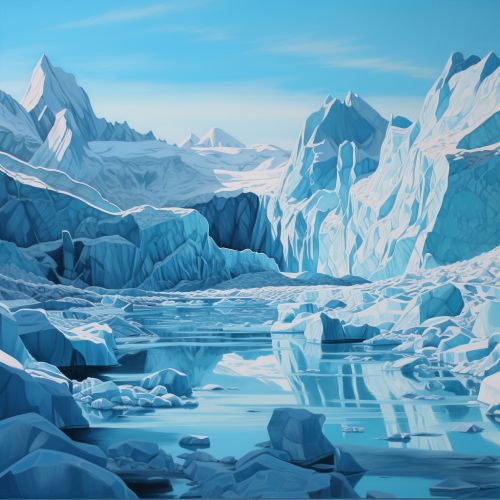Glacial motion
Introduction
Glacial motion refers to the movement of glaciers, which are large masses of ice formed by compacted snow in cold regions. Glacial motion is a slow and continuous process that occurs over many years and is influenced by various factors such as the slope of the land, the thickness of the ice, and the temperature. It is a fundamental aspect of glaciology, the scientific study of glaciers and their effects on the environment.
Formation of Glaciers
Glaciers are formed from snow that has accumulated over a long period of time. The process begins with the accumulation of snow in areas where the rate of snowfall exceeds the rate of melting. Over time, the accumulated snow compresses under its own weight, forming dense, granular ice known as firn. With continued accumulation and compression, the firn eventually transforms into glacial ice, which is dense and blue in color due to the absorption of light.


Types of Glacial Motion
There are two main types of glacial motion: internal deformation and basal sliding.
Internal Deformation
Internal deformation occurs when the ice within the glacier flows like a viscous fluid. This is due to the pressure exerted by the overlying ice, which causes the ice crystals to deform and slide past each other. The rate of internal deformation is influenced by the thickness of the ice, with thicker ice deforming more rapidly than thinner ice.
Basal Sliding
Basal sliding, on the other hand, occurs when the entire glacier slides over the bedrock beneath it. This type of motion is facilitated by the presence of a thin layer of water at the base of the glacier, which reduces friction and allows the glacier to slide. The water is produced by the pressure melting of the ice at the base of the glacier, a phenomenon known as pressure melting.
Factors Influencing Glacial Motion
Several factors influence the rate and direction of glacial motion. These include the slope of the land, the thickness of the ice, the temperature, and the presence of water at the base of the glacier.
Slope of the Land
The slope of the land is a key factor in glacial motion. Glaciers tend to move downhill due to the force of gravity. The steeper the slope, the faster the glacier will move.
Thickness of the Ice
The thickness of the ice also influences the rate of glacial motion. Thicker ice deforms more rapidly under the pressure of the overlying ice, leading to faster movement.
Temperature
Temperature plays a crucial role in glacial motion. Warmer temperatures can lead to increased melting at the base of the glacier, facilitating basal sliding. Conversely, colder temperatures can reduce melting and slow down the movement of the glacier.
Presence of Water
The presence of water at the base of the glacier is a key factor in basal sliding. The water reduces friction between the ice and the bedrock, allowing the glacier to slide more easily.
Effects of Glacial Motion
Glacial motion has significant effects on the landscape. As glaciers move, they erode the underlying bedrock, creating distinctive landforms such as U-shaped valleys, cirques, and moraines. Glacial motion also contributes to the global water cycle by storing and releasing water.
Conclusion
Understanding glacial motion is crucial for predicting the response of glaciers to climate change and for assessing their impact on sea level rise and water resources. Despite the slow pace of glacial motion, the cumulative effects of this process can have profound impacts on our planet's landscapes and ecosystems.
